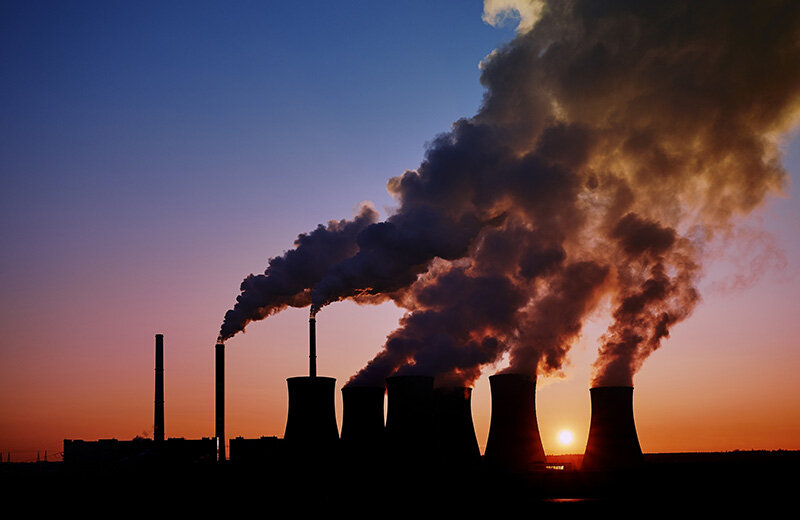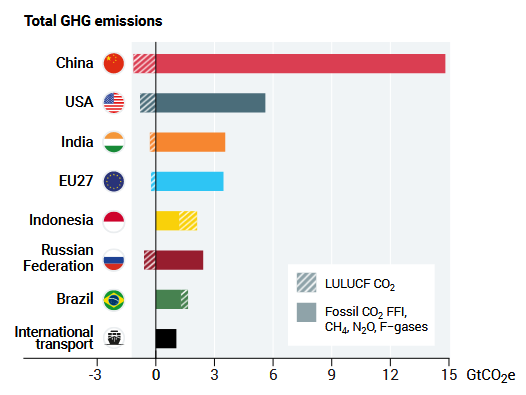FAILING PROMISES
November 5, 2022 | Expert Insights

Despite alarming reports sweeping the headlines repeatedly, the world has turned a blind eye toward climate-induced disasters. International organisations such as the United Nations (UN) have tried inculcating preventive policies and measures in their members. However, most countries have managed to focus solely on their national interests over global interests. Developing countries, in particular, have faced a dilemma where preventive measures can hamper national progress. With such a multifaceted problem, the UN released its 13th Emission Gap Report on 27th October.
The report highlights the reduction of greenhouse emissions to prevent natural disasters such as floods, heatwaves, droughts, storms, and wildfires from occurring frequently. The report's main aim is to assess if the commitments undertaken by various countries are adequate to reduce the impact of global warming. Moreover, the report advises member states to systematically reduce emissions by implementing tighter regulations on the food and transport industry.
Background
In the 2015 Paris Climate Conference, nations pledged to keep global warming below 2° Celsius relative to preindustrial levels and ideally below 1.5°C. This ambitious 1.5°C objective is currently all but unachievable.
According to the United Nations Framework Convention on Climate Change (UNFCCC), only a handful of countries have revised their climate commitments since the conclusion of the Glasgow conference in 2021. Although promised by all states to improve Nationally Determined Contributions (NDCs), progress has been tragically insufficient. By 2030, the new Glasgow commitments would only lower emissions by less than 1 per cent. Therefore, global warming will very likely exceed the Paris Agreement objective of well below 2°C, ideally 1.5°C.
International transportation and seven G20 members and international transport accounted for more than 55 per cent of the total global Green House Gas (GHG) emissions in 2020- China, the U.S., the EU (27), Brazil, India, Indonesia and the Russian Federation. The G20 as a whole has contributed 75 per cent of the total. Overall, the top eight saw a decrease in emissions, going from 32.8 GtCO2e in 2019 to 31.5 GtCO2e in 2020.
On the other hand, Methane emissions are increasing at a greater rate than ever before, according to the latest study by the World Meteorological Organisation. This raises concerns about humanity's ability to limit this greenhouse gas, which is 80 times more potent than carbon dioxide, in the near future.
Yes, nations have encountered unforeseen challenges. The conflict has hampered the ability of governments to achieve comprehensive reform in Ukraine and worries about a worldwide economic downturn. However, experts caution that time is running out to avert catastrophic levels of climate change.

Analysis
The UN Environment Program's Emissions Gap Report has concluded that there is "no feasible pathway" to keep global warming below 1.5°C and that nations are "pitifully short" of achieving their national pledges. Global temperatures are anticipated to increase by 2.8°C by the end of the century under the existing policy framework. The estimated temperature rise would be approximately 2.4 and 2.6°C, which would endanger billions of people if countries don’t ramp up in accordance with their agreed-upon climate targets.
As the world gears up to reassemble in Egypt for COP27 in just two weeks, only a small number of the world's largest polluters have announced stronger commitments at the Climate Change Summit.
However, not all of the news is bad. In a major attempt to cut emissions, the Inflation Reduction Act, a significant piece of legislation passed by the U.S. earlier this year, provides $369 billion in funding for environmental and energy-related challenges. As a result, over the next ten years, U.S. emissions are expected to decline significantly.
Meanwhile, the current conflict between Russia and Ukraine may push the European Union to hasten its switch from fossil fuels, which it has traditionally relied upon, to renewable energy sources. In India, the Institute for Energy Economics and Financial Analysis, in its report, said that a total of $14.5 billion was committed to renewable energy, an increase of 72 per cent and 125 per cent over the pre-pandemic era of the 2019–20 fiscal year and financial year, respectively.
According to the UN report, only a rapid, broad-based systemic overhaul would achieve the significant reductions in greenhouse gas emissions required to meet the target of 1.5°C by 2030 and 2°C by 2030. These reductions total 45 and 30 per cent, respectively, compared to forecasts based on present policies. Additionally, rapid reductions in emissions of methane and other transient climate pollutants must be implemented in addition to reductions in CO2 emissions.
Assessment
- Countries must significantly enhance funding for and implement measures to help vulnerable nations and populations adapt to the impending climate storm.
- Although adaptation targets and emissions reductions have increased over the previous year, it isn’t significant enough to change the course of the globe. Only 24 out of 195 countries have implemented the more stringent emissions goals agreed upon following the Glasgow, Scotland, Climate Summit last year.
- Given everything at risk, it makes sense that governments worldwide would act with greater urgency and cooperation despite the conflicting demands of other crises.








Comments